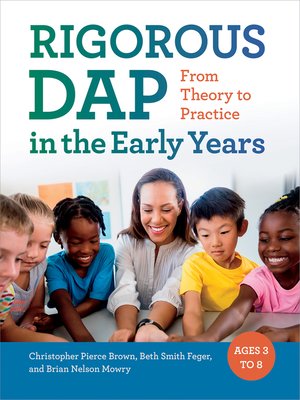
Sign up to save your library
With an OverDrive account, you can save your favorite libraries for at-a-glance information about availability. Find out more about OverDrive accounts.
Find this title in Libby, the library reading app by OverDrive.



Search for a digital library with this title
Title found at these libraries:
| Library Name | Distance |
|---|---|
| Loading... |
RIGOROUS DAP in the Early Years: From Theory to Practice provides teachers with a roadmap for teaching that helps children meet academic expectations and maintains focus on the appropriate development of the whole child. A construct of eleven practices, RIGOROUS DAP supplies teachers with strategies for 1) making instructional decisions that meet the needs of the individual child; 2) sustaining culturally relevant practices; 3) engaging stakeholders in conversations about educating young children for school success through practices that attend to their individual, sociocultural, and developmental needs; and 4) ensuring all children experience high-level learning and succeed in school.
The eleven practices comprising the construct are:
Reaching all children Integrating content areas Growing as a community Offering choices
Revisiting new content
Offering challenges
Understanding each learner
Seeing the whole child
Differentiating instruction
Assessing constantly
Pushing every child forward
An academically rigorous learning environment allows all children to learn at high levels through hands-on learning experiences that address the whole child and connect to the child's world in and out of school. A developmentally appropriate learning environment considers the children's developmental, cognitive, social, emotional, linguistic, and physical development, as well as the sociocultural worlds in which they live.
The eleven practices comprising the construct are:
An academically rigorous learning environment allows all children to learn at high levels through hands-on learning experiences that address the whole child and connect to the child's world in and out of school. A developmentally appropriate learning environment considers the children's developmental, cognitive, social, emotional, linguistic, and physical development, as well as the sociocultural worlds in which they live.







